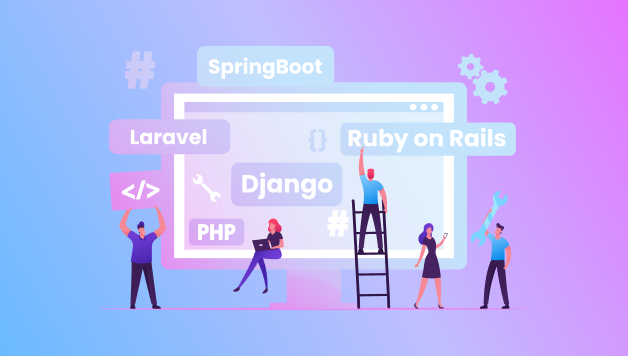
Introduction:
In the fast-evolving world of web development, your choice of backend framework plays a critical role in the performance, scalability, and maintainability of your application. However, as technology evolves and user demands change, even the most reliable frameworks may no longer meet your needs. Here are five unmistakable signs that it’s time to switch your backend framework.
1. Your Current Framework Lacks Scalability
As your application grows, so does the demand on your server infrastructure. If your backend framework struggles to handle increased traffic, it’s a red flag. Scalability is a cornerstone of modern Backend Frameworks, enabling your application to grow seamlessly alongside your business. If your current framework cannot support horizontal scaling, distributed databases, or efficient load balancing, it’s time to explore alternatives.
Consider frameworks like Node.js, which excels in handling real-time, high-traffic applications. As a top backend framework, it offers robust tools to scale applications efficiently. A Node.js development company can help you transition smoothly, ensuring your application is future-proofed for growth.
2. Performance Issues Are Slowing You Down
A lagging application can drive users away and harm your reputation. If your backend framework is causing bottlenecks, leading to slow response times or frequent downtime, it’s time to evaluate other options. Modern backend frameworks are designed to optimize performance through features like asynchronous processing, caching, and efficient database querying.
Switching to a more advanced framework can drastically improve your app’s speed and reliability. For instance, frameworks like Django and Express.js are known for their high performance and ease of integration with various technologies.
3. Outdated or Limited Features
Technology evolves rapidly, and an outdated backend framework can limit your ability to implement modern features. If your framework lacks support for the latest APIs, libraries, or tools, it can restrict innovation and lead to a clunky user experience. Additionally, limited community support or infrequent updates can make it difficult to resolve issues or find resources.
Modern backend framework prioritize developer productivity and user satisfaction with features like built-in security tools, advanced routing capabilities, and seamless integration with frontend technologies. Switching to a framework with active community support and regular updates ensures you stay ahead of the competition.
4. Security Vulnerabilities
With cyber threats on the rise, security is non-negotiable. If your current backend framework does not offer robust security measures or has known vulnerabilities, it puts your application and users at risk. Security features such as input validation, authentication, and encryption should be built into your framework.
For instance, frameworks like Ruby on Rails emphasize security by providing default protections against common threats like SQL injection and cross-site scripting. If your existing framework falls short in this area, it’s time to prioritize security by making a switch.
5. High Development and Maintenance Costs
An inefficient backend framework can lead to higher development and maintenance costs. If your developers spend too much time fixing bugs, writing workarounds, or dealing with compatibility issues, it’s an indication that your current framework is not serving your business efficiently. Modern backend frameworks often come with extensive documentation, pre-built modules, and intuitive tools that streamline development and reduce overhead costs.
Investing in a newer framework can help you save time and resources in the long run. For example, frameworks like Laravel and Flask are known for their simplicity and cost-effectiveness, making them ideal for startups and small businesses.
Choosing the Right Framework
Switching your backend framework is a significant decision that requires careful planning. Evaluate your application’s current needs, future goals, and the skill set of your development team. Research top backend frameworks to find one that aligns with your requirements, whether it’s scalability, performance, or security.
Collaborating with a reliable development partner, such as a Node.js development company, can simplify the transition process. These experts can help you choose the right framework and migrate your application with minimal downtime.
Conclusion
Your backend framework is the backbone of your application, and its performance can make or break your success. If you’re experiencing scalability challenges, performance bottlenecks, outdated features, security vulnerabilities, or high costs, it’s time to consider a switch. Modern backend frameworks offer a range of features that can help you deliver a seamless user experience and future-proof your application.
At Glorywebs, we specialize in helping businesses stay ahead with cutting-edge web development solutions. Whether you’re looking to migrate to a new backend framework or need expert guidance, our team is here to assist you. Reach out to us today to learn how we can elevate your application’s performance and scalability.





Leave a Reply